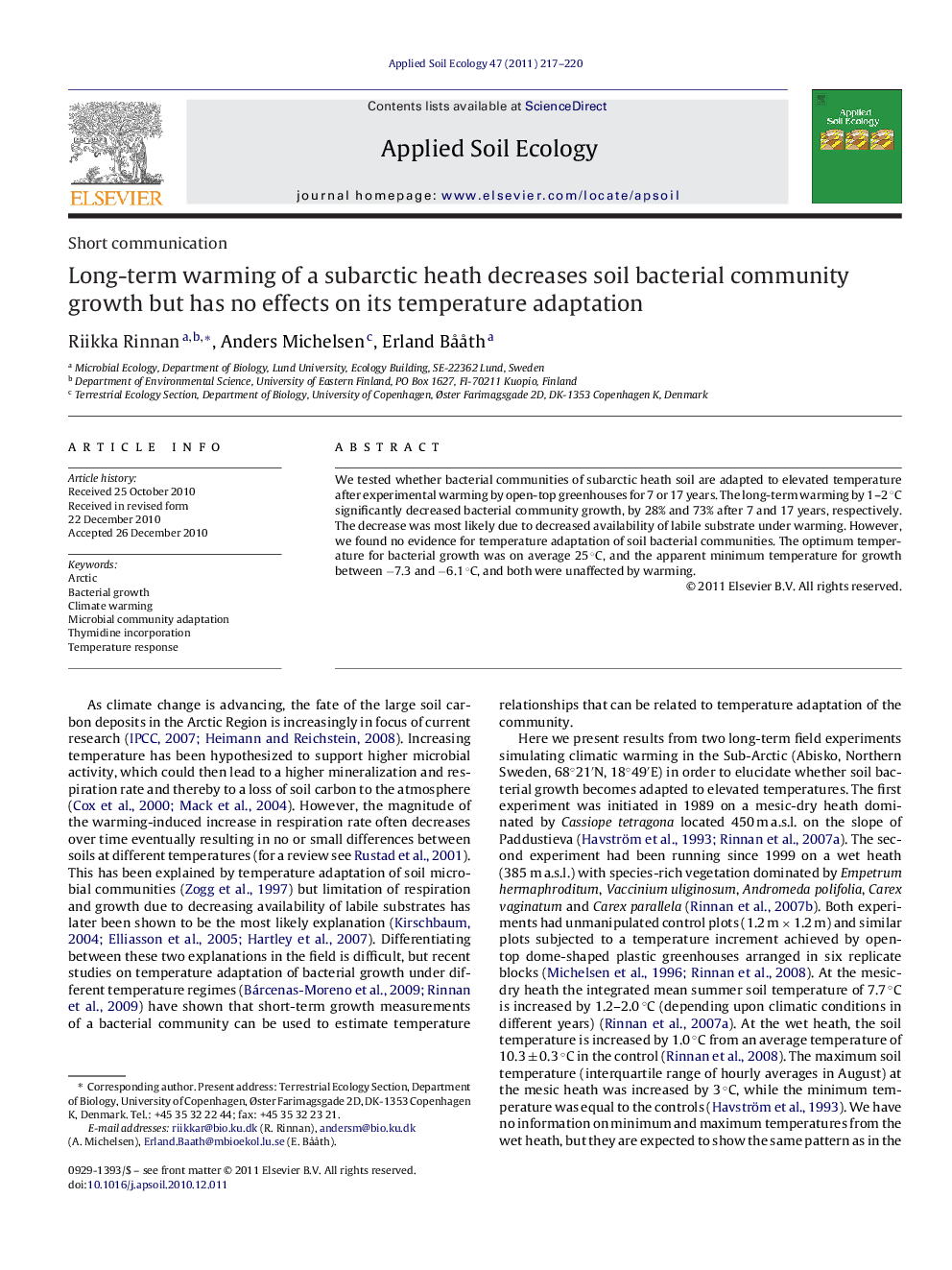| Article ID | Journal | Published Year | Pages | File Type |
|---|---|---|---|---|
| 4382753 | Applied Soil Ecology | 2011 | 4 Pages |
We tested whether bacterial communities of subarctic heath soil are adapted to elevated temperature after experimental warming by open-top greenhouses for 7 or 17 years. The long-term warming by 1–2 °C significantly decreased bacterial community growth, by 28% and 73% after 7 and 17 years, respectively. The decrease was most likely due to decreased availability of labile substrate under warming. However, we found no evidence for temperature adaptation of soil bacterial communities. The optimum temperature for bacterial growth was on average 25 °C, and the apparent minimum temperature for growth between −7.3 and −6.1 °C, and both were unaffected by warming.
Research highlights▶ Long-term warming of a subarctic heath decreased soil bacterial community growth. ▶ The decrease in bacterial growth was larger after 17 than after 7 years of warming. ▶ Warming did not affect temperature adaptation of the soil bacterial communities.
